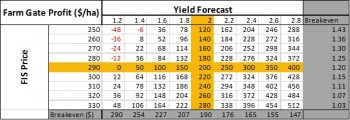
Trump remains popular among US farmers
Posted by GBA Administrator | Grain Brokers Australia News, Misc | No CommentsLast week at the Australian Grains Industry Conference (AGIC) WA Grains Business Development Manager, Tim Byass met with Sara Wyant, veteran US agricultural journalist and editor of Agri-Pulse.
Ms Wyant said Trump remains popular among US farmers and that agriculture was enjoying near-unprecedented access to the president with strong influence in terms of key issues such as trade policy.
“The map of where his voters sit has been critical, his position on trade policy has made agricultural people nervous, but you see with the North American Free Trade Agreement (NAFTA), he nearly threw it out but the opinions of the farmers, those that elected him, were considered.”
Listen to the ABC radio interviews below by Clint Jasper on Trump talking the type of talk farmers want to hear and US trade restrictions.















